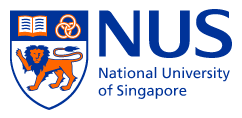New power-conversion-efficiency benchmark in polythiophene solar cells
13 May 2011. ONDL scientist Bo LIU reports a new performance benchmark for regioregular poly(3-hexylthiophene) – phenyl-C61-butyrate methyl ester (usually abbreviated rrP3HT-PCBM) solar cells at the European Materials Research Society Spring (E-MRS) meeting. The power-conversion-efficiency that has been achieved is 4.2% (spectral mismatch corrected, amended Sep 2011), over a wide phase space, which is significantly higher than the usual efficiencies of 3% (amended, Sep 2011) found in devices made by conventional spin-casting of the blend of polymer donor and molecular acceptor. The new cells are based on a novel acceptor-infiltrated donor-network heterostructure made with the help of crosslinking of the polymer donor layer. “This is a novel step that illustrates new opportunities to control the donor acceptor morphology to reach higher performance than what is possible from nature by simply depositing the mixture and hope everything turns out right!” says Bo LIU. Furthermore a complete power-conversion-efficiency map of these rrP3HT-PCBM cells have been made for the first time, which yields new insights into the device physics of organic solar cells. The method is also potentially compatible with roll-to-roll processing. This work was done in collaboration with Richard Friend at the University of Cambridge.
